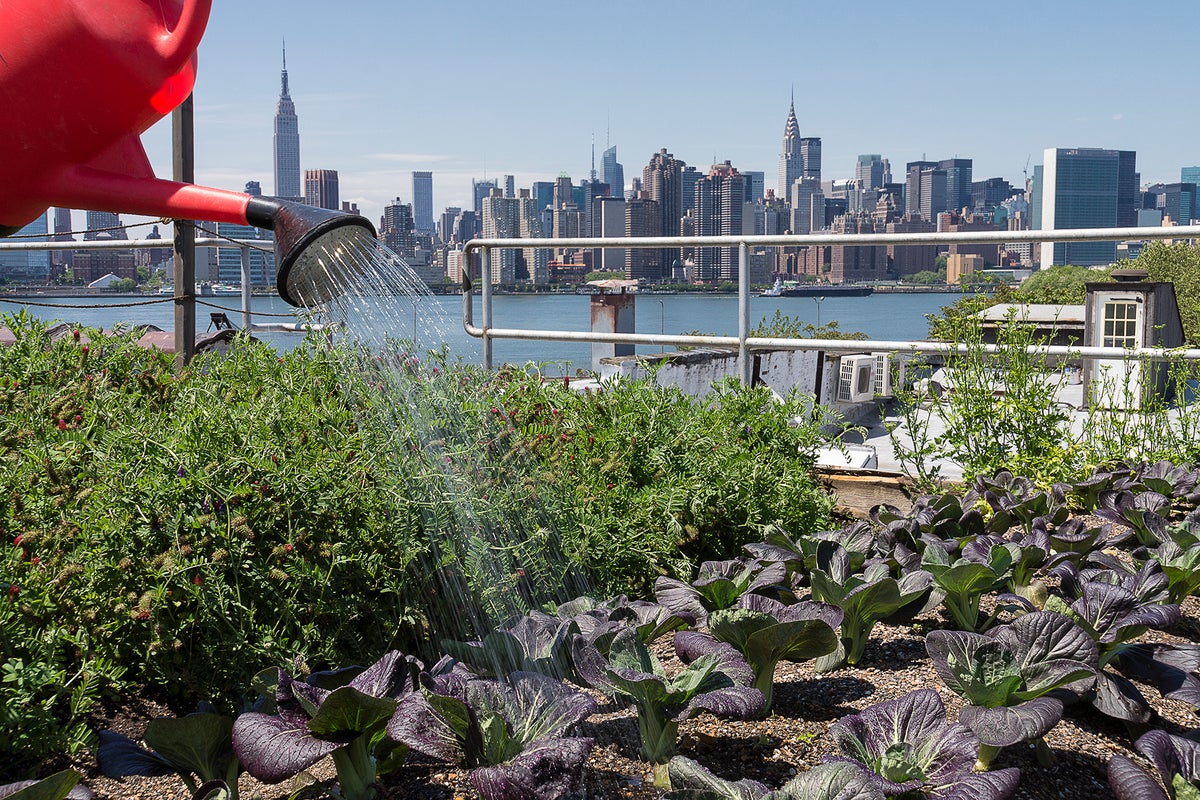Fascination About City Blooming
Fascination About City Blooming
Blog Article
The Single Strategy To Use For City Blooming
Table of ContentsCity Blooming Things To Know Before You Get ThisThe Facts About City Blooming RevealedA Biased View of City BloomingAbout City BloomingNot known Facts About City Blooming
Urban farming supplies special opportunities to connect diverse areas together. In enhancement, it provides chances for health and wellness care service providers to connect with their patients. Therefore, making each neighborhood yard a hub that is reflective of the neighborhood.
The power used to move food is reduced when city farming can supply cities with locally expanded food. Pirog located that standard, non-local, food circulation system used 4 to 17 times a lot more gas and sent out 5 to 17 times much more carbon dioxide than the neighborhood and local transport. In a research study by Marc Xuereb and Area of Waterloo Public Wellness, it was approximated that switching over to locally-grown food can save transport-related emissions equivalent to nearly 50,000 statistics tons of CO2, or the equivalent of taking 16,191 automobiles off the road - urban gardening.

The Best Strategy To Use For City Blooming
Plants take in atmospheric co2 (CO2) and launch breathable oxygen (O2) with photosynthesis. The process of Carbon Sequestration can be even more improved by incorporating other farming methods to raise removal from the ambience and protect against the launch of carbon dioxide during harvest time. This process depends heavily on the kinds of plants picked and the method of farming.
The reduction in ozone and other particle matter can profit human health. Lowering these particulates and ozone gases might lower mortality prices in city areas in addition to boost the health of those living in cities. A 2011 post found that a roof having 2000 m2 of uncut turf has the potential to get rid of up to 4000 kg of particle matter and that one square meter of environment-friendly roof is sufficient to balance out the annual particulate matter discharges of a car. They are likewise responsible to collect standing water and "grey water", which can be unsafe to public wellness, particularly left stationary for extended periods. The application of metropolitan agriculture in these uninhabited great deals can be an affordable method for getting rid of these chemicals. In the process referred to as Phytoremediation, plants and the associated microorganisms are selected for their chemical ability to weaken, take in, convert to an inert form, and get rid of toxic substances from the dirt.
Mercury and lead), inorganic substances (e.g. Arsenic and Uranium), and natural compounds (e.g. oil and chlorinated compounds like PBCs) (sustainability). Phytoremeditation is both an environmentally-friendly, affordable and energy-efficient measure to lower contamination. Phytoremediation just costs concerning $5$40 per lots of dirt being decontaminated. Application of this procedure likewise minimizes the amount of dirt that must be thrown away in a harmful waste landfill.
The 5-Minute Rule for City Blooming
Other techniques of remediation usually disturb the dirt and require the chemicals had within it right into the air or water. Plants can be made use of as a method to eliminate chemicals and additionally to hold the soil and avoid erosion of contaminated soil decreasing the spread of toxins and the risk offered by these whole lots.
Making use of well-studied plants is important due to the fact her response that there has actually already been significant bodies of job to test them in various problems, so feedbacks can be validated with assurance. Such plants are likewise useful since they are genetically similar as crops instead of natural variations of the same varieties. Normally metropolitan soil has had the topsoil removed away and has actually caused soil with reduced aeration, porosity, and drainage.

The research "Noise exposure and public health" found that exposure to continual noise is a public health and wellness trouble. https://danielnold94107.wixsite.com/my-site-1/post/city-gardening-a-green-oasis-in-urban-spaces. Instances of the hinderance of continual noise on human beings to consist of: "listening to impairment, hypertension and heart disease, nuisance, rest disturbance, and decreased college efficiency." Given that most roofings or uninhabited great deals include difficult flat surfaces that reflect sound waves rather than absorbing them, adding plants that can absorb these waves has the potential to bring about a substantial decrease in sound pollution
City Blooming Fundamentals Explained
Urban farming is related to boosted consumption of fruits and veggies which reduces risk for condition and can be a cost-effective means to offer people with high quality, fresh produce in city settings. Generate from metropolitan yards can be perceived to be more delicious and desirable than shop purchased fruit and vegetables which may additionally bring about a broader approval and higher intake.
1). Garden-based education can likewise produce dietary advantages in children. An Idaho research study reported a positive association in between school gardens and raised intake of fruit, vegetables, vitamin A, vitamin C and fiber amongst 6th graders. Gathering vegetables and fruits starts the chemical process of nutrient deterioration which is especially detrimental to water soluble vitamins such as ascorbic acid and thiamin.
Gathering produce from one's own neighborhood garden cuts back on storage times significantly. Urban farming additionally offers high quality nourishment for low-income families. Research studies show that every $1 invested in a community yard returns $6 worth of vegetables if labor is not thought about an aspect in investment. Numerous urban gardens lower the stress on food banks and other emergency situation food service providers by giving away shares of their harvest and supplying fresh produce in areas that or else may be food deserts.
The 3-Minute Rule for City Blooming
Urban farming has actually been shown to boost wellness outcomes. Garden enthusiasts eat twice as much vegetables and fruit than non-gardeners. Degrees of physical activity are additionally favorably associated with metropolitan farming. These outcomes are seen indirectly and can be sustained by the social involvement in an individual's area as a participant of the community farm.
Report this page